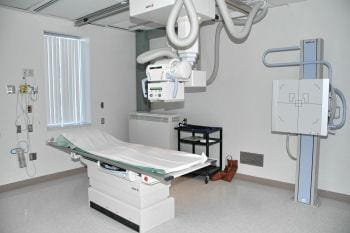
X-ray is a form of ionizing radiation used primarily for diagnostic imaging.
X-rays are especially useful in imaging bones, and can be used to detect some diseases of the tissues. For example, a common chest x-ray can be used to identify lung diseases such as pneumonia or lung cancer.
What to expect
Typically, x-ray imaging is done on an outpatient basis (you go home the same day), there is no preparation required, and little to no discomfort.
The x-ray technician will offer you a flexible shield to protect your abdomen and chest from radiation exposure, if that is not the part of your body being imaged.
You must wait until the technician ensures a proper image has been captured.
How to prepare
- Bring your health card with you.
- If you are or think you are pregnant, inform your health provider and the x-ray technician.
- Your images will either be on film or digital. If you will need the images for a consultation with a doctor or a specialist, confirm with the lab whether that person will be able to access the images via the imaging network. If not, confirm whether the images will be sent by the lab, or if you need to take them with you.
Risks
The amount of radiation from a single x-ray procedure is very small – it is equal to the amount of background radiation the average person is exposed to over a three-day period of ordinary activity, according to the Canadian Association of Radiologists.
If you have any concerns about radiation exposure due to x-rays, talk to your doctor/nurse practitioner or the x-ray technician before your procedure. See more about radiation risks in Computed Tomography.
